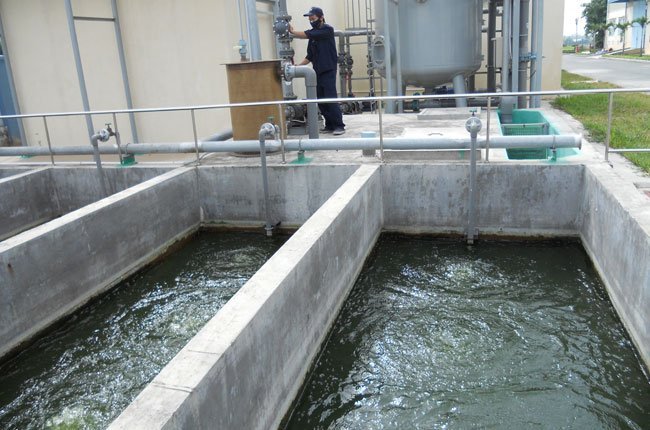Big-shots unite to develop wastewater system in second city
 |
According to newswire Saigontimes, the project would cover an area of 35 hectares in Binh Tan district and have a total capacity of 650,000 cubic metres per day. The construction will be divided into two phases under a build-lease-transfer (BLT) model. The first phase, with the investment capital of $350 million, is expected to come into operation in 2020 and treat 450,000 cubic metres of wastewater.
Under the BLT contract, the investors will pour capital into the project and will be allowed to recover investment capital through collecting service fees for 30 years.
According to the joint venture’s proposal, it will integrate the three current wastewater treatment plants of Tan Hoa-Lo Gom, Saigon West, and Binh Tan into a new wastewater treatment system.
In addition, the joint venture plans to build new sewer systems linking pump stations in Tan Phu district and District 6 with the wastewater treatment system.
The city currently has only two treatment plants which can only handle a total wastewater volume of 171,000 cubic metres per day, while the city discharges up to two million cubic metres every day.
Under the government’s plan, Ho Chi Minh City will have 12 wastewater treatment plants by 2025 with a designed capacity of approximately three million cubic metres a day.
Established in 1959, Lotte E&C, the construction arm of South Korean Lotte Group, is a global integrated construction company dealing with public works, plants, architecture, and housing.
In March, Lotte E&C expressed interest in joining the second phase of the project upgrading Yen Vien-Lao Cai railway at a cost of $113 million, after contributing to the project’s first phase.
In September, the firm sent a second letter of intent to the Railway Project Management Unit (PMU) under the Ministry of Transport, expressing hopes to be involved in the upgrading project. However, as of yet, the authority has yet to issue an answer.
What the stars mean:
★ Poor ★ ★ Promising ★★★ Good ★★★★ Very good ★★★★★ Exceptional
Latest News
More News
- Mitsubishi Estate launches Logicross Hai Phong - a milestone in logistics evolution (November 20, 2024 | 14:32)
- Semiconductor workforce partnerships deliver industry-relevant training (November 20, 2024 | 10:58)
- German Quickpack to invest $31.7 million in Long An province (November 20, 2024 | 09:31)
- Foreign-invested enterprises drive logistics investment in the southeast region (November 20, 2024 | 09:27)
- Chile visit underscores trade benefits (November 19, 2024 | 10:00)
- Trump’s second term impacts sci-tech activities and industry 4.0 technologies (November 18, 2024 | 10:00)
- Vietnam eyes nuclear revival to bolster energy security (November 14, 2024 | 16:46)
- Kyokuyo completes $13.5 million seafood factory in Vietnam (November 14, 2024 | 12:19)
- VinFast receives $3.5 billion funding from Vingroup and Pham Nhat Vuong (November 14, 2024 | 06:38)
- Localities sprint to reach FDI targets (November 13, 2024 | 10:00)















 Mobile Version
Mobile Version